A reflection on the life and work of British Catholic author Michael Davies on the 10th Anniversary of his death.
Leo Darroch served as President of the International Una Voce Federation — a Catholic group in support of the old Latin rite of the Mass — from 2007 to 2013. This text is based on a conference given in Rome on November 3, 2012.
Michael Treharne Davies was born on 13th March 1936. His father, a Welshman, was a Baptist and his mother, who was English, was a member of the Church of England.
On leaving school in 1954 at the age of eighteen he joined the British Army as a regular soldier and served in Malaya, Egypt, and Cyprus.
There is one comment in his army service records that is of particular interest. In August 1957 his commanding officer stated: “He is a quiet, kind man with a very Christian outlook on life. He is too kind-hearted and I have never heard him run down anyone. For this reason he does not possess the disciplinary powers to make a non-commissioned officer. He puts service, loyalty, and the welfare of others before self. I recommend him unreservedly for any position requiring trust and dedication to his fellow men.”
It was during this army service that he was drawn to the Catholic faith and was received into the Church on 17th April 1957. After leaving the army in 1957 he met a young Croatian girl, Marija Milosh, at the French Church in Soho, London, and they married in July 1961. Michael attended St. Mary’s Catholic Training College, in London, and qualified as a teacher in 1964. During his time at this college he wrote a number of short stories and poems for the college magazine. When he left college his Senior Lecturer provided a reference in which he said: “Mr. Michael Davies is the most hard-working student I have ever known in my seven years as a Lecturer. He is open, reliable, co-operative, firm in his religious faith and tenacious in pursuing his ideals without fuss or outward show.”
This was the formative background that laid the foundations for his great work that followed. From being a soldier in the service of his country and a teacher of young minds, he became a soldier and teacher in the service of his Church.
Michael’s first appearance in print was in May 1967. A magazine had printed an article on the Vietnam War by a priest who had made various claims about Americans bombing Catholic churches in North Vietnam and killing people on their way to Mass. Michael did not believe the story and checked the information. He proved that the entire article was groundless and based on Communist propaganda.
This theme of checking information in the search for truth became the cornerstone, the constant thread, of everything he produced subsequently. It became a continual source of irritation, and more, to those “experts” who wished to steamroller liturgical change upon a disbelieving laity, that their spurious claims were put under the microscope and found, in the most part, to be without foundation.
As a schoolteacher and also a parent, Michael knew the importance of guiding young minds along the path of truth, and especially so in matters of the faith.
It is well known that initially he had a degree of enthusiasm for Vatican II but he quickly realized that things were not as he and many others expected.
He joined The Latin Mass Society of England and Wales in February 1967 and very quickly became actively involved, giving talks on “Mass and the under elevens,” and “Children and the Mass.”
He had been a Catholic for only 10 years and a teacher for only four years, but he could see immediately the damaging effect the changes would have on the faith of young people. He was to be their champion and he threw himself entirely into the battle.
His life’s work was spent meticulously researching these supposed new insights, this new scholarship, and exposing it to public scrutiny as the shallow and destructive movement it was. He had discovered in his late teens and early twenties that the Truth existed in the Catholic Church and he was not prepared to allow anyone to take it away from him or his children.
For Michael, the truth was everything and he was appalled at the way the modernist pseudo-intellectuals and their fellow travellers had infiltrated the Catholic media, the seminaries, and the publishing houses, and were introducing a new religion to our churches and schools to the detriment of the faith. He was equally appalled not only that many of the hierarchies of the world had allowed these “experts” to peddle their destructive theories unchallenged, but even worse, that many actively supported them, while condemning as divisive those Catholics who were not prepared to abandon the faith of their parents and grandparents.
For those people who, when the liturgical changes were introduced, were ploughing a very lonely “traditional” path in their parishes, his books and encouragement were like manna from heaven.
In his research and exposition of the real facts on the liturgy and architecture he shed a great deal of light on matters that many liturgical “experts” would have preferred to keep secret. It was this information, exposing the shallowness and historical ignorance of the “progressive modernists,” that has allowed so many ordinary people in the pew to present their priests and bishops with reasoned argument against unwarranted change, something that they did not enjoy.
The fact that the cause of tradition is now making a very effective return worldwide to our altars is due in great part to Michael and his scholarship and leadership. This may well be his lasting legacy to the Church: the provision of books and papers that rallied the faithful and educated them in a period of time that will truly be called one of the dark ages of the Church.
By the early 1970s, Michael had already established a reputation for being a formidable defender of the faith and was forming friendships with other wonderful defenders of Catholic tradition in the English-speaking world – men such as Father Paul Crane S.J. in London with Christian Order, Hamish Fraser in Scotland with Approaches, and Walter Matt in the USA with The Remnant.
These three publishers formed a mighty triumvirate in defense of Catholic doctrine and tradition, and in Michael they immediately recognized a writer to cherish.
For nearly 35 years he wrote incessantly and prodigiously for these magazines, and his articles were always the first to be read before all others. In his writing Michael Davies encapsulated the theological virtues of faith, hope and charity. He was possessed of a wonderful faith that even in the darkest moments never wavered; he never lost hope that tradition would be restored to our altars, and, though he criticized endlessly the disastrous reforms inflicted upon the Church, he never resorted to personal abuse of those who were responsible for them.
By the mid-1970s, the crisis within the Church was deepening. In his general research on the various novelties that were being introduced he had amassed a huge amount of data on the Council and how the great majority of the Fathers had been deceived by a well-orchestrated plan of a clique of European bishops and their liturgical advisors.
Thus was born his great trilogy Liturgical Revolution.
His first volume, Cranmer’s Godly Order (1976), examined the Protestant Reformation, what happened and why. His second work, Pope John’s Council (1977), was written to provide an objective and documented explanation of the fact that the Church in the West is disintegrating and that the responsibility for this disintegration must be laid at the doors of those who manipulated the Second Vatican Council for their own ends. His third volume, Pope Paul’s New Mass (1980), provided a detailed examination of the development of the Roman rite, the liturgical legislation pouring out from Rome during and after the Council, the prayers and rubrics of the new form of Mass, and the devastating impact of the changes on the Church throughout the world.
Michael had submitted his first book, Cranmer’s Godly Order, to the Censor of his diocese for an imprimatur, but it was refused, despite the Censor finding no doctrinal fault with it. An appeal to his archbishop proved fruitless. Such was the prevailing hostile attitude of the authorities to anyone who dared question Vatican II or its “fruits.”
Following this unjust rebuff he decided there was no point in submitting any more of his work for an imprimatur, but everything he produced was examined by theologians for inspection and amendment where necessary.
Michael’s books were published originally by the Augustine Publishing Company but he told me in 1984 that it had dropped all his books “because of complaints that they were extreme.”
Michael’s kindness was unlimited and he sent me free copies of all his books as soon as they were published. He made an interesting comment in 1986 when he said that he never even glanced at his “efforts” once they were in print, and had not even read Pope Paul’s New Mass. Once a book was finished, he moved immediately on to the next. At one point he was writing three books at the same time.
In the midst of working on this trilogy, Liturgical Revolution, a taxing enough project in itself, Michael became engaged in a spirited defense of Archbishop Marcel Lefebvre.
In 1976 the Catholic Truth Society of England and Wales published a pamphlet that seriously misrepresented the archbishop. Michael wrote to the author and suggested he either substantiate or withdraw his allegations, but he refused. This led to a pamphlet entitled Archbishop Lefebvre – The Truth and this was so successful it ran to several reprints.
However, he decided that the only way to fully present the truth about the archbishop would be to write an apologia, and this was published by the Angelus Press in June 1979 as Apologia Pro Marcel Lefebvre. In the event, this became Volume One and was later followed by Volume Two (August 1983) and Volume Three (April 1988).
His output then became prolific with works on such great figures as John Cardinal Newman (1978), St. Pius X (1983), and St. John Fisher (1998).
Such a prodigious feat of writing would have been immense for a full-time author, but Michael was first and foremost at this time a schoolteacher with a young family. He was teaching by day and writing by night and on weekends. In all of this it must not be forgotten that his wife Maria played a vital role in supporting all his activities, a fact that he readily acknowledged.
At home he would be so immersed in his writing that Maria did everything else. His meals had to wait until he finished some important paper, and his daily routine seemed to revolve around the times of postal collections. “I must catch the post” was a daily cry as he dashed out of the house. His home in Bromley, Southeast London, became the center of the lay traditional movement and he and Maria entertained visitors from all over the world, including many priests and seminarians.
It was surprising, given the problems encountered by many other Catholic teachers who were deeply unhappy about the “new” faith being imposed on the Church and in our schools, that he suffered no problems personally in his own schools. Maria Davies said that Michael was an excellent teacher and he had a compulsion to teach about the knowledge he had acquired. That is why his books are so readable.
He took great pride in the fact that he was a primary school teacher and had an endless stream of stories about his pupils. He deeply resented that he was teaching his pupils the Catholic faith he had learned as a convert, and which had been reinforced at his teacher training college, and then they were going on to senior schools and beyond and being exposed to a version of the Catholic faith that he did not recognize – a faith that had been adapted to the secular spirit of the age and was watered down to be acceptable to everyone, but in fact was rejected by most.
Although he loved teaching, when his writing became the focus of his life, he wanted to retire. He wrote to me in July 1994 to say he had “overcome the problem of the day job interfering in what really interested him” and had taken early retirement. He said he was now poor but happier.
As Michael’s reputation grew, so did the demands on his time. Everyone wanted a quote, an article, a lecture, a foreign visit, or simply a reply to a letter or an email – of which he received thousands each year. In 1980 he appeared on television in America where he debated the state of the Church with a Father Joseph Champlin from the Chancery of Syracuse, New York, who served on the bishops’ commission on the liturgy.
From then onwards Michael became probably the foremost lay speaker in the USA; the Americans took him to their hearts and he was invited back time and time again. With his reputation growing worldwide, his tours took to many European countries, and further afield in India, Australia, New Zealand, and even Nigeria where he helped with the foundation of a traditional parish.
St. Matthew recounts how Jesus said that we must not lay up our treasures on this earth but lay them up in heaven. Where your treasure is, there your heart is too. It was abundantly clear where Michael’s heart was. In 1998 a friend complained to Michael about a magazine using some photos without permission. He wrote in reply,
“You will not be surprised to learn that I do not in the least share your indignation. I believe that we are in a war about the most important issues in the world, that our enemies are the [he named a bishop] of this world and that if anything that we have written or photographed can be useful to our allies we should be delighted. I have not only had extensive passages from my books quoted without permission, I have had entire books and pamphlets reprinted or translated into other languages on numerous occasions without being informed. I discovered quite by accident that in one country five of my full length books and about ten of my pamphlets had been published. In every case I have been pleased that my writing has been found useful in fighting the good fight.”
Michael truly appreciated that we as individuals were not important; it was the restoration of the traditional liturgy that was paramount and that anything that we could do should be focused totally on this cause.
I think it is worth mentioning that Michael made very little money from his writing.
Unfortunately, he was too trusting and some publishers simply did not pay him anything, even though they were selling thousands of his books. In February 1997 he said that one particular publisher declared itself bankrupt but carried on trading. Over 70,000 copies of Liturgical Shipwreck were sold, and he never received a cent.
An honorable exception to this is Angelus Press which has always been scrupulous and regular in paying the agreed royalties.
Michael Davies’ books were read by many priests and prelates. One bishop commented to me that he had found Michael to be a man of the highest integrity, vision, and commitment. He said he had ploughed a lonely furrow for many years and, specifically, in his writings on the Mass, he had kept an awareness of Pope St. Pius V to the fore in all our minds. He ended by saying that his writings will, in time, reveal his real greatness.
Another prelate said to me that he had hoped and prayed that he would meet him but was disappointed that it never happened. It was Michael, he said, who had led him to a true appreciation of the sacred liturgy.
In 1995 Michael Davies was elected President of the International Federation Una Voce, a position that gave him greater international status and a much higher “official” profile which allowed him access to the major Vatican departments. It also increased greatly an already taxing workload as for most of his term of office he acted as president, secretary and treasurer.
He became a respected visitor to the Congregations for the Doctrine of the Faith, of Divine Worship, and the Ecclesia Dei Commission. In addition to his great work with the Una Voce movement he received, and accepted, many invitations to functions in small parishes and these were seen as equally important as his international engagements.
He was kindness and patience personified to everyone who wished to speak to him but was deeply uncomfortable when compliments were being paid to him. He would become embarrassed and change the subject to something entirely different, such as Welsh rugby (his second religion).
But every compliment was thoroughly deserved – he was the master who came forth from the liturgical chaos and restored clarity of Catholic teaching on liturgy, on doctrine, and on the re-ordering of churches. This is why the liturgical establishment disliked (hated?) him so much. He embarrassed their experts, and he angered those bishops who were in thrall of the weird and (not so) wonderful theories of their experts and who had implemented wholesale liturgical and architectural changes on their recommendations.
I think it is true to say that Michael Davies, while being a man hugely admired and respected within the world of traditional Catholicism, and known – and feared? – in the corridors of power in Rome, was perhaps relatively unknown to the great majority of Catholic faithful who still attend Sunday Mass in their own parishes.
The immensity of the man will only be fully appreciated in the years and decades to come when his writings will be recognized as the foundation and springboard of the resurrection and resurgence of the traditional liturgy and faith of the Church.
The greatest tribute we could pay him for his service to us and the Church is to make his work more widely known. For those members who do not have any of his books I would recommend his trilogy Liturgical Revolution. Those who have one or more of his books could perhaps try and persuade their local clergy to read something of his work.
He was diagnosed with terminal prostate cancer in late 2002 but he saw this as more an irritation than something to be feared.
He cheerfully commented to me that should the pain become too much he would simply drink more whisky: a drink he often enjoyed to excess.
Although his illness seriously affected his energy, it did not diminish his determination, but it took such a toll on his health that he could only concentrate for about two hours each day. Not to be defeated, he had a small bed placed in his office where he could rest.
He wanted desperately to update his great trilogy on the liturgy and was working on Pope John’s Council until the day he died.
In the event, he died suddenly of a heart attack on 25th September 2004.
Michael’s legacy, and what an immense legacy he has left us — seventeen full length books and several dozen booklets and pamphlets — provides a body of work of truly Catholic genius which will enlighten, educate and sustain Catholics in future generations.
A timely antidote to the self-interested, self-serving, shallow delusions of men whose ideas were condemned by Pope St. Pius X in Pascendi Gregis over 100 years ago.
Since the promulgation of Summorum Pontificum the debate concerning the liturgy has been re-ignited and more and more senior figures in the Church are raising their voices in support of a new analysis of the failed policies of the 1960s and 1970s.
The recent re-publication by Angelus Press of Michael’s great trilogy Liturgical Revolution (Cranmer’s Godly Order, Pope John’s Council, and Pope Paul’s New Mass) is a timely and valuable contribution to this debate and will surely bring his work to a new audience; an audience that has no first-hand knowledge of the years surrounding the Second Vatican Council, and who will appreciate his clinical assessment of the changes that were imposed, and his exposé of the flawed and false scholarship that drove the changes.
He said to his family that if he were to be remembered for anything he hoped it would be for this trilogy.
These three books deserve pride of place in the libraries of all Catholic seminaries. Perhaps the greatest tribute we could pay him for his service to the Church, and to the faithful, is for each of us who has one or more of his books, to make his name known to those who have no knowledge of him or his work. If we are indeed serious in our desire to restore the ancient liturgy to our altars we must make it our apostolate to persuade our parish priests to read his trilogy on the liturgical revolution – it could produce remarkable fruit.
Perhaps the publication in July 2007 by Pope Benedict XVI of the motu proprio Summorum Pontificum was the greatest vindication of Michael’s unceasing public support for Cardinal Joseph Ratzinger in the face of much opposition.
It was a relationship based on mutual trust, and on the occasion of Michael’s death in September 2004 His Eminence sent this tribute to the Latin Mass Society:
“I have been profoundly touched by the news of the death of Michael Davies. I had the good fortune to meet him several times and I found him as a man of deep faith and ready to embrace suffering. Ever since the Council he put all his energy into the service of the Faith and left us important publications especially about the Sacred Liturgy. Even though he suffered from the Church in many ways in his time, he always truly remained a man of the Church. He knew that the Lord founded His Church on the rock of St. Peter and that the Faith can find its fullness and maturity only in union with the successor of St. Peter. Therefore we can be confident that the Lord opened wide for him the gates of heaven. We commend his soul to the Lord’s mercy.”
+ Joseph Cardinal Ratzinger
9 November 2004
(Translated from the original German)

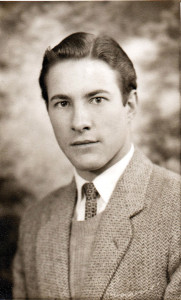
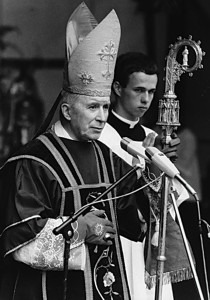
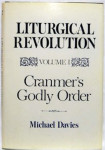
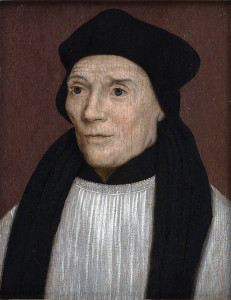
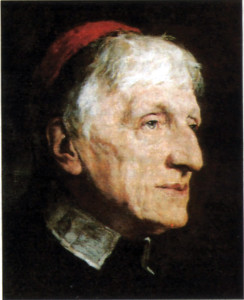
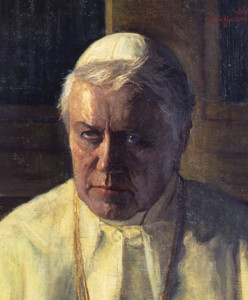




Facebook Comments